Felt’s original AR – ‘Aero Road’ – was released in 2008, when aero road bikes were starting to catch on. The silhouette of the 2020 bike looks similar but, as always, the devil is in the detail.
Tube shapes and carbon layups have been refined, exposed cables have disappeared while carbon wheels and hydraulic disc brakes feature.
The latest AR retains a slim frontal profile but is more muscular in shape, with wider, kammtail aerofoil tubes providing more stiffness.
Felt says the improvements in this area are in the double digits, in percentage terms, but what matters is that the new AR feels taut, responsive and exciting out on the road.
Felt AR Ultegra Di2 frame and geometry
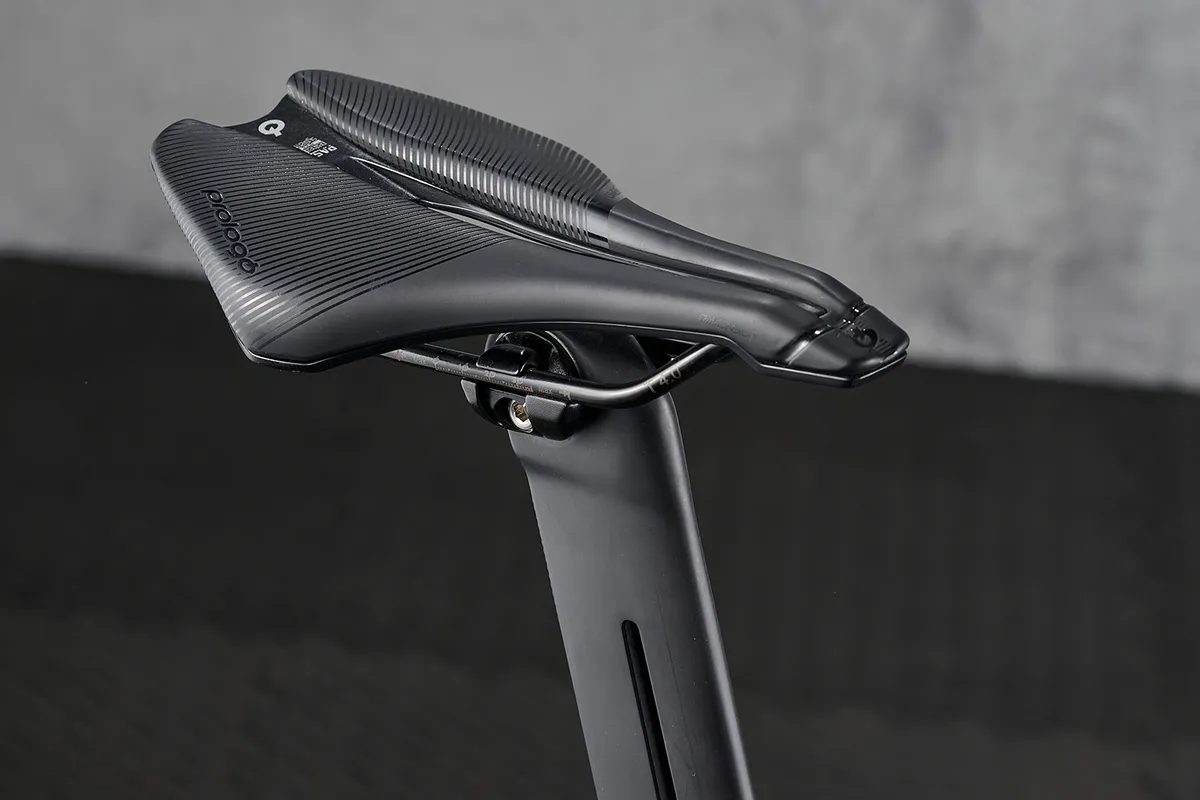
The position on my 56cm bike is typically racy, with stack and reach figures of 561mm and 394mm, respectively.
The seatpost is split for most of its length to add comfort and has an adjustable saddle clamp you can flip to change the effective seatpost angle from 73.5 degrees to a more time trial-friendly 78.5 degrees.
The 100mm stem on my 56cm frame combines with the 73.5-degree head-tube angle for a front end that responds quickly to steering inputs.
| | 48 | 51 | 54 | 56 | 58 | 61 |
|---|---|---|---|---|---|---|
| Seat angle (degrees) | 74.3 | 74.4 | 73.5 | 73.5 | 73.5 | 73 |
| Head angle (degrees) | 71 | 72.1 | 73 | 73.5 | 74 | 74 |
| Seat tube (cm) | 44.1 | 47.3 | 50.25 | 52.6 | 55.3 | 60.1 |
| Top tube (cm) | 50.9 | 52.9 | 54.3 | 56 | 58 | 60.5 |
| Head tube (cm) | 9.7 | 11.1 | 13 | 15 | 16.7 | 19.75 |
| Fork offset (cm) | 5.2 | 4.7 | 4.7 | 4.3 | 4.3 | 4.3 |
| Bottom bracket drop (cm) | 7.2 | 7 | 7 | 7 | 7 | 7 |
| Wheelbase (mm) | 974 | 977 | 980 | 988 | 1,003 | 1,024 |
| Standover (cm) | 70.5 | 73.4 | 76 | 78 | 80.7 | 84.5 |
| Stack (cm) | 50.1 | 51.8 | 53.9 | 56.1 | 57.9 | 60.8 |
| Reach (cm) | 37 | 38.1 | 38.3 | 39.4 | 40.8 | 41.9 |
Given the rider causes around 80 per cent of the drag, being able to adjust fit parameters to achieve an aerodynamic body position is crucial. It’s an area where aero bikes often trip up though, sacrificing adjustability for integrated components that save a few watts in the wind tunnel but don’t take a rider into account. The AR avoids this, save for one minor point.
The Sprint carbon stem is Felt’s own – available in lengths from 90mm to 140mm – and uses a standard handlebar mount, so you’re not tied into using the Devox Aero bar. It’s a great handlebar with aero-profiled tops and comfortable drops but it’s nice to have the choice.
The stem and bar have also been designed for travel. The cables are routed through the stem's underside, allowing the handlebar to be removed for packing without disconnecting any cables.
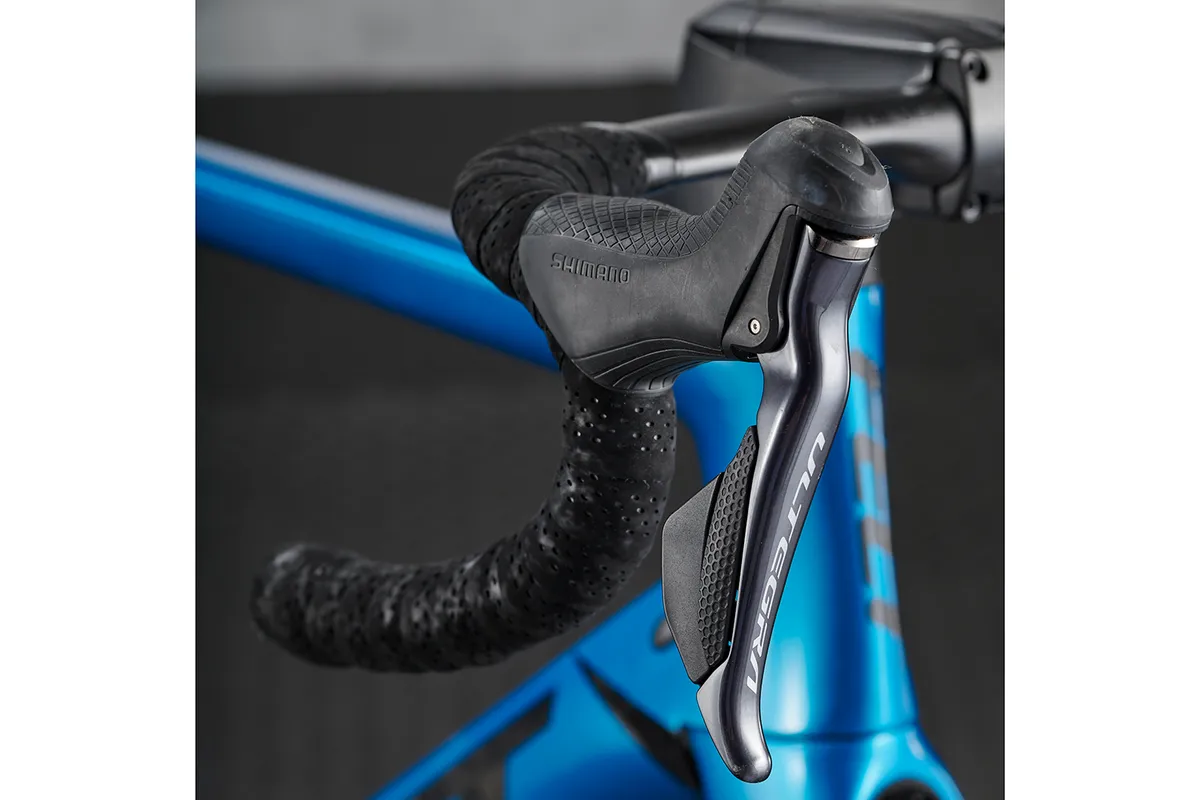
The downside is that the handlebar height can only be lowered if you cut the steerer tube. The stem is also only available in a six-degree angle and can’t be flipped for extra height, though this shouldn’t be an issue if you get a bike fit.
The cables can also be routed semi-externally so you can use a standard stem but this would require overhauling the cabling.
Felt AR Ultegra Di2 aero claims
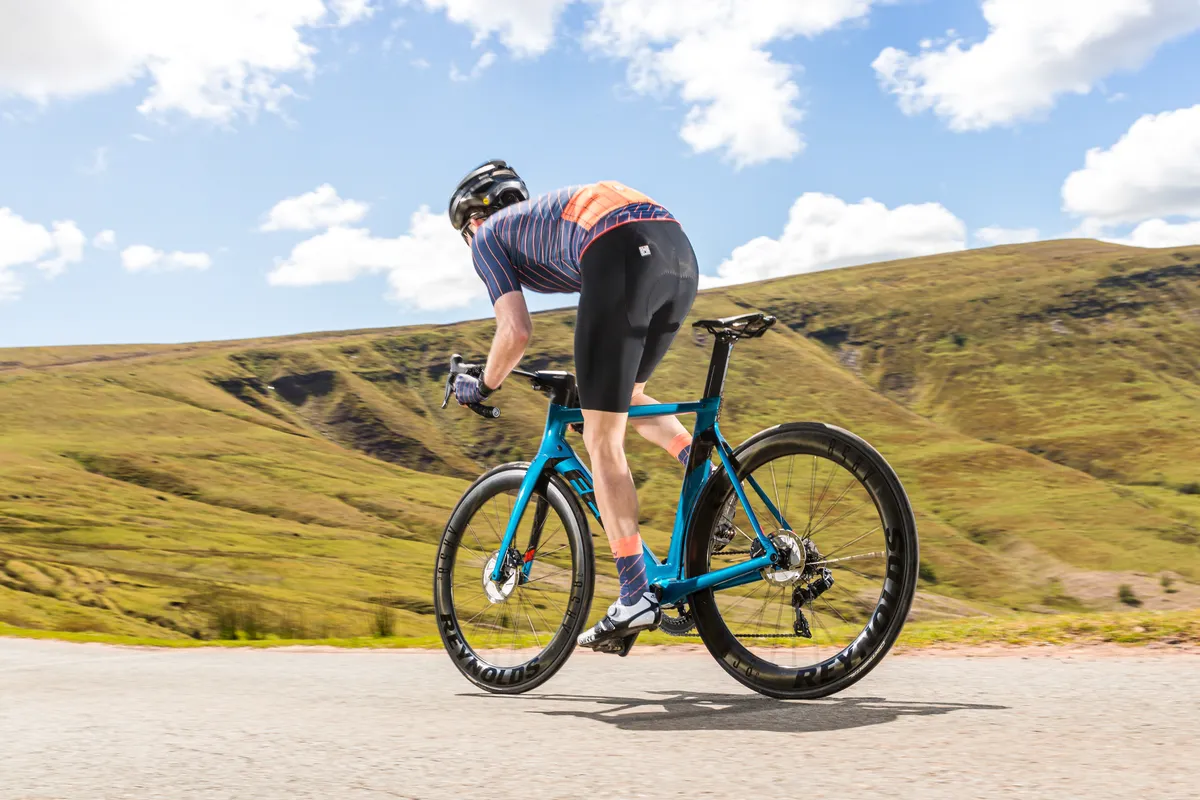
In terms of aerodynamic performance for the bike alone, Felt claims a 9.4 per cent improvement over its predecessor, the 2014 Felt AR at 0 degrees yaw (i.e. a straight headwind). That’s said to be worth around 10 watts at 48kph, though the savings will be lower at 30kph.
That’s compared with a bike that was already pretty slippery, and versus a more ‘normal’ road bike (like a Giant TCR Advanced Pro 2 Disc) you can tangibly feel the difference all of the aero optimisation makes to your speed. It’s great fun if you like going fast.
Deep frame tubes and wheels, and hydraulic disc brakes, do add weight and at 8.28kg my bike was 210g heavier than the equivalently specced Vitus ZX-1 Evo CRS I also had on test and around a kilo heavier than an all-rounder like the Giant TCR Advanced Pro 0 Disc.
A kilo might look significant on paper but outside of long, steep climbs it’s a difference that doesn’t affect performance as much as is assumed; aero bikes really are faster in most situations.
Felt AR Ultegra Di2 ride impressions
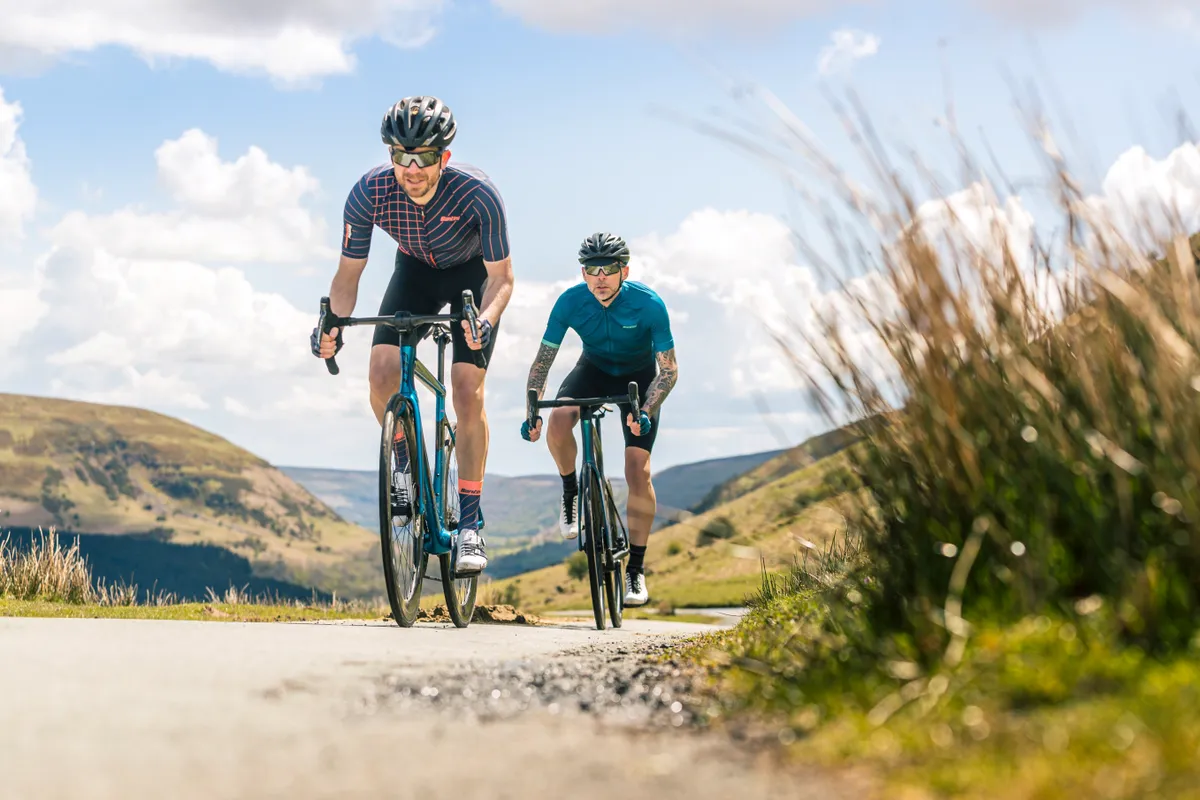
This AR gets a Shimano Ultegra R8070 Di2 groupset, with 52/36 chainrings and an 11-30 tooth cassette. Shifting is unflappable and I appreciate the 30-tooth sprocket, sprocket on steep climbs, especially as it doesn’t affect how tight the ratios are at the opposite end of the cassette.
The Ultegra hydraulic disc brakes, meanwhile, provide plenty of stopping power in all conditions and though noisy when wet, they still slow you down fantastically well.
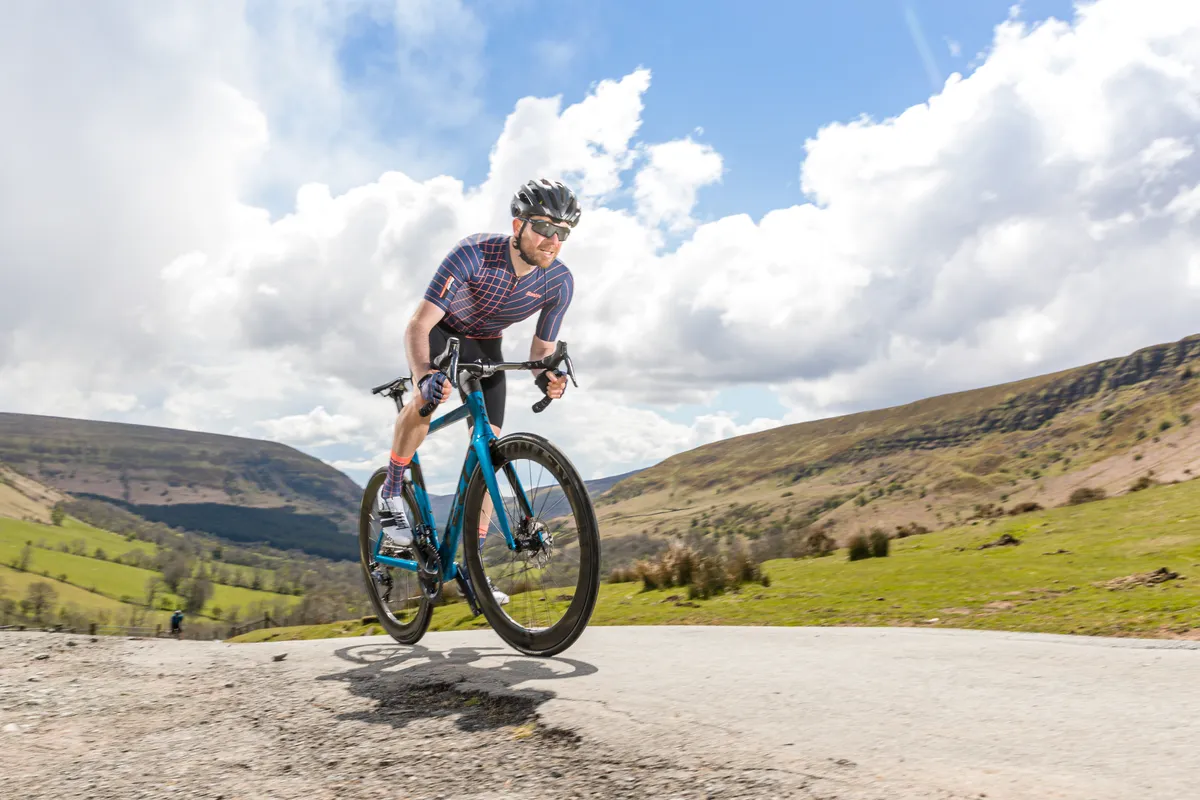
The Reynolds AR58 DB wheelset and Continental GP5000 clincher tyres are also excellent and contribute a lot to the Felt's speed. They’re remarkably easy to handle on windy days, which is impressive for wheels with 58mm deep rims. I’d be happy to use these every day.
The 19mm internal rim width boosts the 25mm tyres to around 26.5mm at 65psi. It makes for a ride that’s on the firmer side, especially on rough roads, but it’s very fast on good roads. There is room for tyres up to 30mm wide, although anything over 28mm (the external width of the Reynolds rims) will compromise the wheels' aero performance.
Felt AR Ultegra Di2 bottom line

Overall, the Felt AR is an accomplished aero road bike, with few compromises and a practically flawless spec. It’s carrying a little extra weight, but it’s hard to argue with its performance.
How we tested
We tested four of the latest aero race bikes to find out if speed means less comfort and usability. Do the deep-section wheels make it a handful on windy days? How does it perform on our broken back roads? And do you need an engineering degree to maintain it?
They are a range of price points (although none are exactly cheap) to see whether spending more money does actually buy you more speed, and if more integration is always better.
Also on test
Product
| Brand | felt |
| Price | 6999.00 EUR,6299.00 GBP,6999.00 USD |
| Weight | 8.2800, KILOGRAM (56cm) - |
Features
| Fork | Felt AeroRoad 3.0 UHC Advanced Carbon |
| br_stem | Felt Sprint |
| br_chain | Shimano Ultegra |
| br_frame | Felt AeroRoad 3.0 UHC Advanced Carbon |
| Tyres | Continental GP5000 700 x 25c |
| br_brakes | Shimano Ultegra hydraulic disc |
| br_cranks | Shimano Ultegra 52/36t |
| br_saddle | Prologo Dimension 143 T4.0 |
| br_wheels | Reynolds AR58 DB |
| br_headset | Felt |
| br_shifter | Shimano Ultegra Di2 |
| br_cassette | Shimano Ultegra 11-30 |
| br_seatpost | Felt AeroRoad IL 2.0 |
| br_handlebar | Devox DBar.C0 Aero |
| br_bottomBracket | Token Ninja Lite, BB386 EVO 24mm |
| br_availableSizes | 48, 51, 54, 56, 58, 61cm |
| br_rearDerailleur | Shimano Ultegra Di2 |
| br_frontDerailleur | Shimano Ultegra Di2 |
